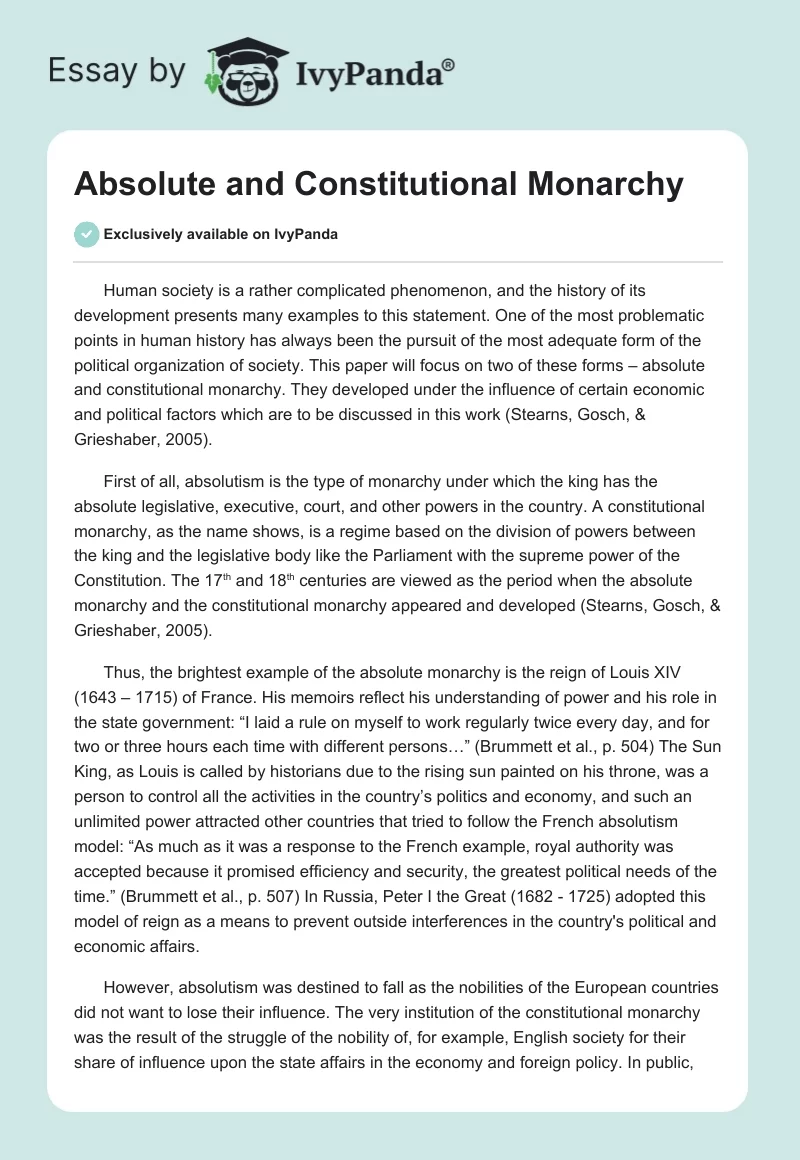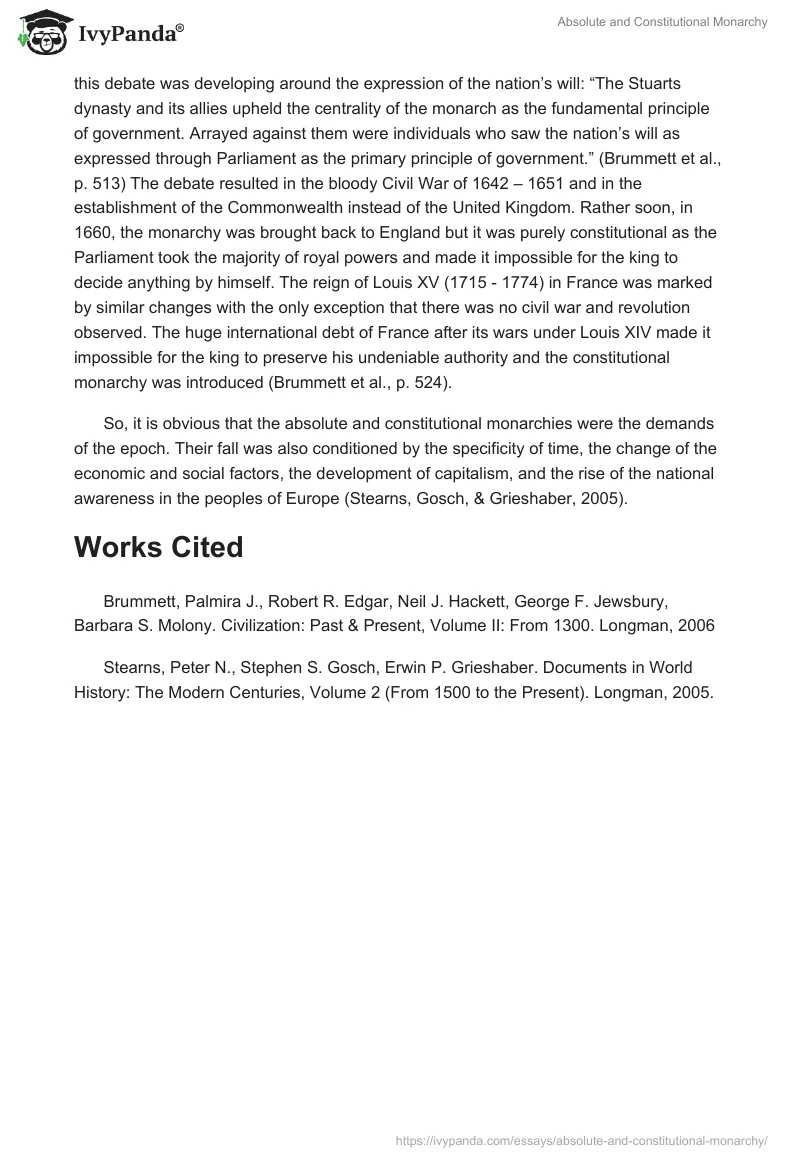Human society is a rather complicated phenomenon, and the history of its development presents many examples to this statement. One of the most problematic points in human history has always been the pursuit of the most adequate form of the political organization of society. This paper will focus on two of these forms – absolute and constitutional monarchy. They developed under the influence of certain economic and political factors which are to be discussed in this work (Stearns, Gosch, & Grieshaber, 2005).
First of all, absolutism is the type of monarchy under which the king has the absolute legislative, executive, court, and other powers in the country. A constitutional monarchy, as the name shows, is a regime based on the division of powers between the king and the legislative body like the Parliament with the supreme power of the Constitution. The 17th and 18th centuries are viewed as the period when the absolute monarchy and the constitutional monarchy appeared and developed (Stearns, Gosch, & Grieshaber, 2005).
Thus, the brightest example of the absolute monarchy is the reign of Louis XIV (1643 – 1715) of France. His memoirs reflect his understanding of power and his role in the state government: “I laid a rule on myself to work regularly twice every day, and for two or three hours each time with different persons…” (Brummett et al., p. 504) The Sun King, as Louis is called by historians due to the rising sun painted on his throne, was a person to control all the activities in the country’s politics and economy, and such an unlimited power attracted other countries that tried to follow the French absolutism model: “As much as it was a response to the French example, royal authority was accepted because it promised efficiency and security, the greatest political needs of the time.” (Brummett et al., p. 507) In Russia, Peter I the Great (1682 – 1725) adopted this model of reign as a means to prevent outside interferences in the country’s political and economic affairs.
However, absolutism was destined to fall as the nobilities of the European countries did not want to lose their influence. The very institution of the constitutional monarchy was the result of the struggle of the nobility of, for example, English society for their share of influence upon the state affairs in the economy and foreign policy. In public, this debate was developing around the expression of the nation’s will: “The Stuarts dynasty and its allies upheld the centrality of the monarch as the fundamental principle of government. Arrayed against them were individuals who saw the nation’s will as expressed through Parliament as the primary principle of government.” (Brummett et al., p. 513) The debate resulted in the bloody Civil War of 1642 – 1651 and in the establishment of the Commonwealth instead of the United Kingdom. Rather soon, in 1660, the monarchy was brought back to England but it was purely constitutional as the Parliament took the majority of royal powers and made it impossible for the king to decide anything by himself. The reign of Louis XV (1715 – 1774) in France was marked by similar changes with the only exception that there was no civil war and revolution observed. The huge international debt of France after its wars under Louis XIV made it impossible for the king to preserve his undeniable authority and the constitutional monarchy was introduced (Brummett et al., p. 524).
So, it is obvious that the absolute and constitutional monarchies were the demands of the epoch. Their fall was also conditioned by the specificity of time, the change of the economic and social factors, the development of capitalism, and the rise of the national awareness in the peoples of Europe (Stearns, Gosch, & Grieshaber, 2005).
Works Cited
Brummett, Palmira J., Robert R. Edgar, Neil J. Hackett, George F. Jewsbury, Barbara S. Molony. Civilization: Past & Present, Volume II: From 1300. Longman, 2006
Stearns, Peter N., Stephen S. Gosch, Erwin P. Grieshaber. Documents in World History: The Modern Centuries, Volume 2 (From 1500 to the Present). Longman, 2005.


